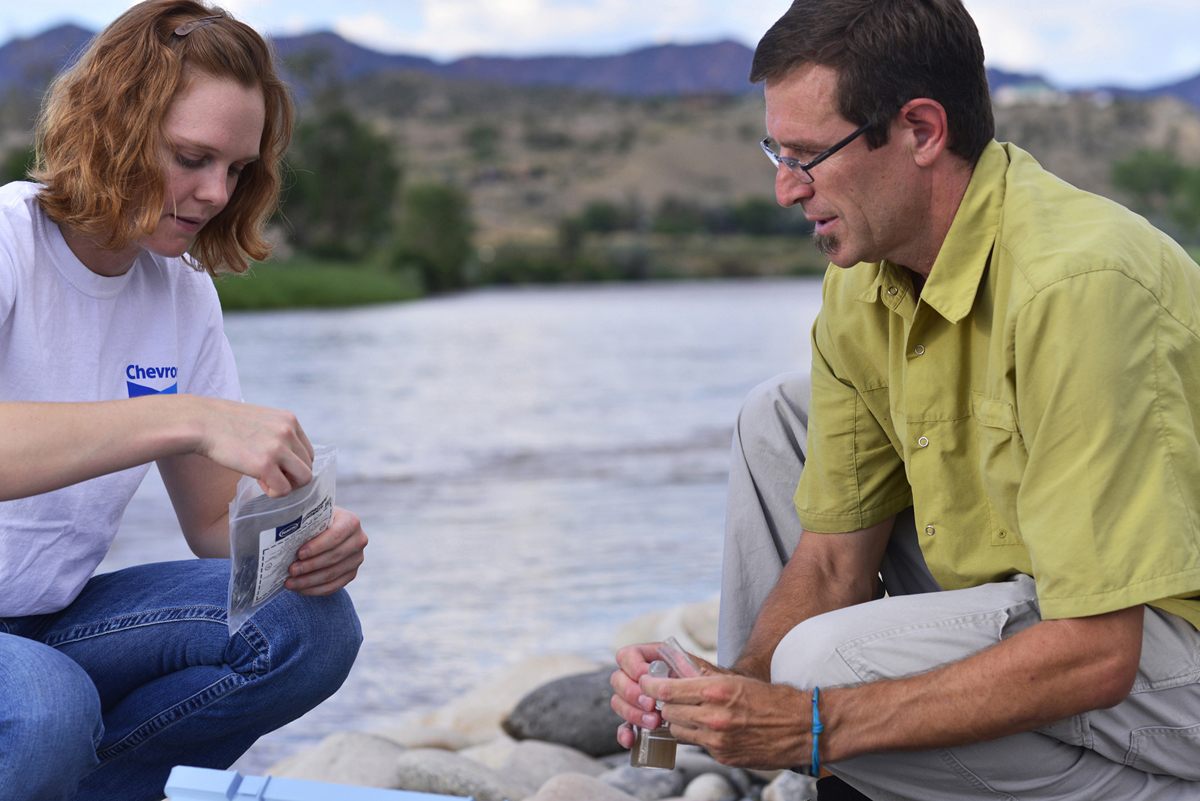Chevron Summer Science Institute at CMC boost teachers’ learning

By helping teachers improve their ability to teach science, the Rifle, Colo., campus of Colorado Mountain College (CMC) is motivating area students to become more excited about science, technology, engineering and math (STEM) education.
Faced with a pressing need based on area students’ low scores in mandated science testing, in 2013 the college’s Rifle campus initiated a two-year program supported by a $250,000 grant from Chevron Corporation. Over the past two summers, 66 teachers from 12 schools in four school districts attended the Chevron Summer Science Institute, which consisted of five-day workshops led by Nephi Thompson, associate professor of biology and chemistry at CMC.
“Research has shown that the most significant gains in students’ scientific knowledge come from improving their teachers’ ability to teach science,” Thompson said. “The workshops and partnering with our fellow teachers in the schools is one way we can help serve the needs of our community.”
Test results proved the validity of Thompson’s approach. The CMC program helped teachers increase their science content knowledge by as much as 15 percentage points (from 75 percent to 91 percent) over the course of a five-day workshop, giving them greater skills and more tools to provide quality science education to area students. The results at the conclusion of the pair of five-day workshops held a year later were almost as impressive, increasing after one session by 9 percentage points and after a different session by 13 percentage points.
Thompson explained, “The workshops helped participants to reflect on what science instruction can look like in their own classrooms and expand their pedagogical content knowledge, which is understanding how to teach a subject in a way that will be best for the learner.”
Sharing the excitement of learning science
The CMC model of science education is rooted in hands-on exercises that students will be quick to embrace. For example, teachers were taught to use basic equipment to build sundials, wade in a river to test water for microorganisms and explore planetary movement. They even used ping-pong balls to study moon shadows.
By giving teachers the tools to engage their students, the workshops represented an important first step in seeking positive change. A key second step involved follow-up. In the months after the summer workshops, Thompson visited each of the participating schools and observed how the teachers were applying their newly acquired learning methods.
He described one session at Underwood Elementary School in Parachute, Colo., where the students were organized into teams and shared ideas on the overarching theme of energy. “As they read books on the topic, they gained a double benefit of learning science through literacy,” he said.
Outside experts from the Denver Museum of Nature and Science and other area institutions came to the classrooms armed with fossils, rocks and minerals, helping to teach the students about “energy and ecosystems, and predators and prey,” said Thompson. “The kids liked handling these pretty crystalline structures that they can find outside. And, above all, they got excited about science.”
He added, “Children love exploring things, and with help from our program, teachers are able to rediscover that sense of scientific exploration.”
Another exercise involved the use of carts and motion detectors to explore force and motion. “Teachers would read a book titled ‘Sheep in a Jeep’ to their students, talk about the different forces acting on the jeep in each picture, build their own ramps and explore the effects of height on the ramp and roughness of the floor on the distance their keep traveled,” Thompson explained. “It was one of the cross-disciplinary activities that gave teachers opportunities to design lessons that taught science through literacy and math.”
The teachers were uniformly enthusiastic in their comments about the CMC program. “The Chevron Summer Science Institute was a wonderful time for hands-on science learning,” said Katina Leatherby, first-grade teacher at Glenwood Springs Elementary School. “It gave me more confidence, materials and the understanding that I, in turn, could pass on to my students as I taught science this year.”
“Our experience with the program confirms that teaching in this way helps students to connect to their preexisting knowledge and science experiences,” said Thompson. “Science is everywhere. Through natural play and day-to-day activities, students experience and explore physical, chemical and biological systems without realizing the complexity of what they see. Learning about science gives them a framework for understanding their world.”
